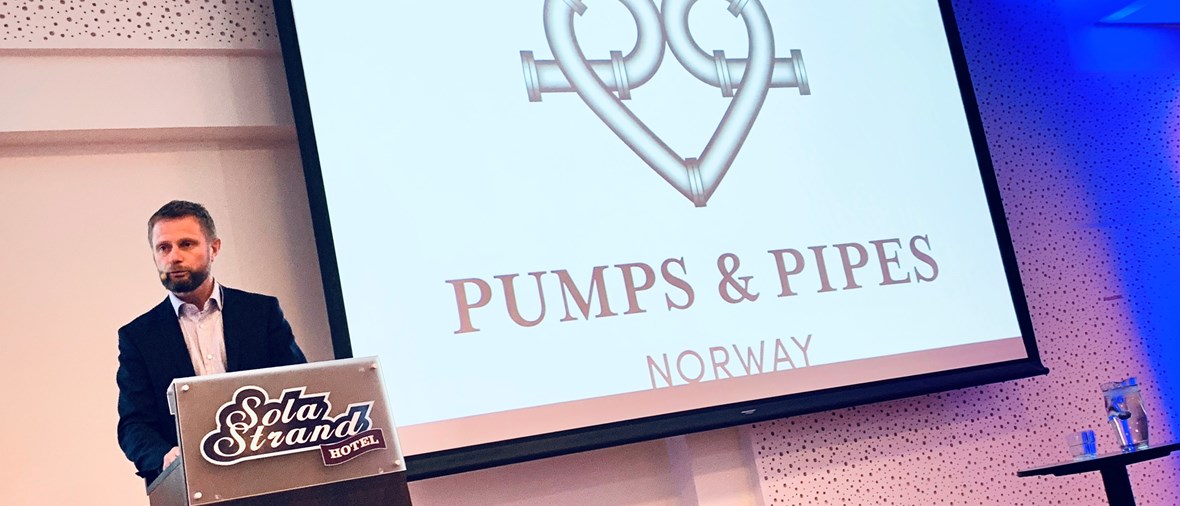The first Pumps & Pipes Norway Conference provided the participants with inspirational examples of the transfer of technology between healthcare, oil and space.
Medical and petroleum experts from both sides of the Atlantic gathered in Stavanger for the first time to exchange experience and knowledge.
The Pumps & Pipes concept is about collaboration across disciplines and industries to find new and better solutions. The fields of petroleum and healthcare in particular have proven to have a great deal to offer each other.
The first collaboration of this type began in Texas, and the founder of Pumps & Pipes, Alan B. Lumsden, was one of the speakers at the Stavanger conference.
“The other guy's toolkit”
He is a physician in Houston, and often found that he was sitting next to an oil engineer when travelling by air. Several of his seatmates pointed out the similarities between the two different professions. For example, measuring blood flow through arteries and veins and fluids through a pipeline is not really that different.
Then came the idea: Perhaps different approaches and technology can help solve known problems in each other's field? The idea resulted in the Pumps & Pipes organisation, and just over 10 years later, many such projects have seen the light of day.
"We are constantly seeing that the solution to our problems can be found in the other guy's toolkit,” said Lumsden.
Pipe cutting for bones
Ruben Rathnasingham, assistant dean of Health Product Innovation at the Dell Medical School in Texas, came from the United States with numerous examples of technology transfers.
They are experimenting, for example, with the use of laser technology for cutting pipes in the industry as a tool for cutting bones. The goal is to reduce the number of patients who have to return for additional surgery after replacement of their knee joint with an implant, due to weaknesses in the current tools.
Early testing
Dell Medical School is a new university that was built around innovation methodologies. It involves new work processes, with thorough need analysis and early testing of possible solutions at university clinics.
"The oil and gas industry approach, which always defines the challenge before finding the solution, appeals to me,” said Rathnasingham.
Norwegian projects
The Norwegian spin-off of Pumps & Pipes is a collaboration between Stavanger University Hospital, NORCE, the University of Stavanger and Greater Stavanger. They have also helped promote a number of projects operating in the technological intersection between healthcare and oil, several of which were presented at the conference.
Stavanger University Hospital, the University of Stavanger and NORCE are collaborating, among other things, on a project for the creation of a personalised 3D image of blood flow through the heart with colour coding that can help physicians evaluate whether the patient needs surgery or not.
Sigrid Kaarstad Dahl, a researcher at SINTEF, talked about their use of simulation to predict the effect of surgical intervention before surgery through oil and gas research. The patient can then receive more tailored treatment, and the risk that they will need additional surgery is reduced.
New solutions
Helge J. Bjorland from Globus AI explained how they have transferred technology for data analysis in the oil and gas industry to predict changes in the patient's state of health at an early stage.
Fredrik Bærheim from NUI demonstrated his new solution to help COPD patients based on diving technology developed on the Norwegian continental shelf.
Thomas Lindner of the Regional Centre for Emergency Medical Research and Development (RAKOS) explained how they are able to analyse emergency calls in order to provide the patient with better prehospital treatment and determine more quickly which hospital the patient should be brought to.
Researching innovation
The entrepreneurial company Tidewave showcased its product, a mattress for hospital beds that slowly turns patients from side to side to avoid bed sores. This started out as a student project at the University of Stavanger.
The Ph.D. student Hilda Bø Lyng presented her research on how researchers from different areas can best collaborate and what obstacles they often encounter.
Adnan A. M. Aqrawi, Lead Consultant in Equinor Technology Innovation, told how the company cultivates an innovation culture and develops concrete innovations, both internally and in collaboration with others.
Praise from the Minister of Health
Norwegian Minister of Health and Care Services, Bent Høie. added prestige to the conference on the second day, and he gave a thumbs up to the interdisciplinary collaboration.
“Pumps and Pipes is a simple and beautiful idea. But it also requires a lot of hard work. I am impressed with the projects that have been presented here over these two days,” the minister said.
“The challenge in healthcare is that the population is growing older, and we will be needing more and more nursing services. This need cannot be met with ever-increasing spending. We need new solutions,” Høie maintained.
“Norway is innovative.”
He strongly believes that healthcare technology can give Norway a new leg to stand on in the future.
“I think we are more innovative in Norway than we give ourselves credit for. You people here in the room are an example of that.”
117 people registered for the conference, which was held at Sola Strand Hotel on 17 and 18. October 2018. The conference organisers were Norway Pumps & Pipes and the Norwegian Oil and Gas Association.


